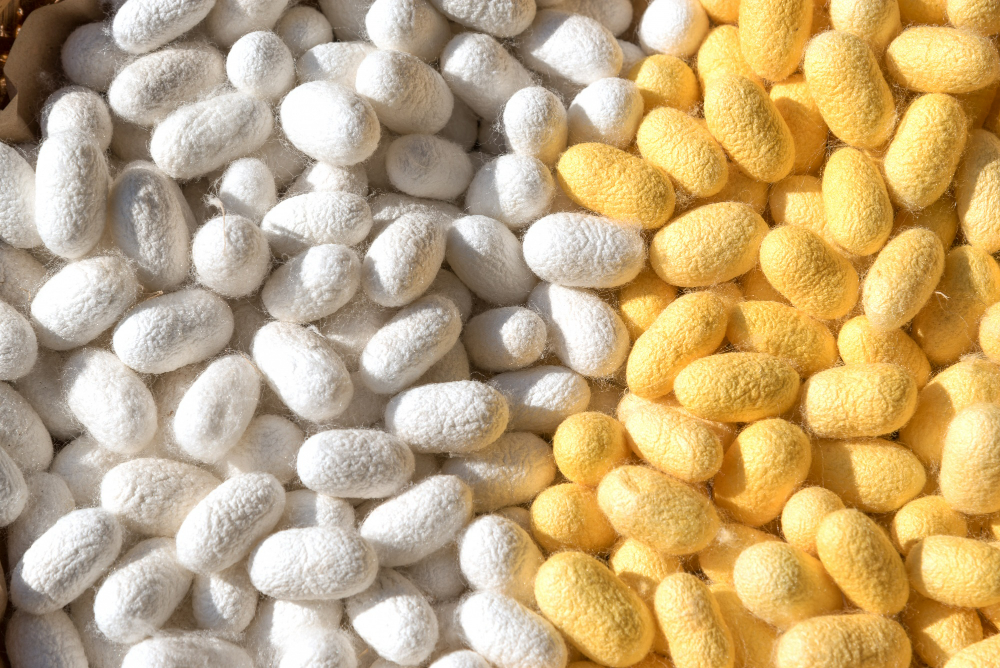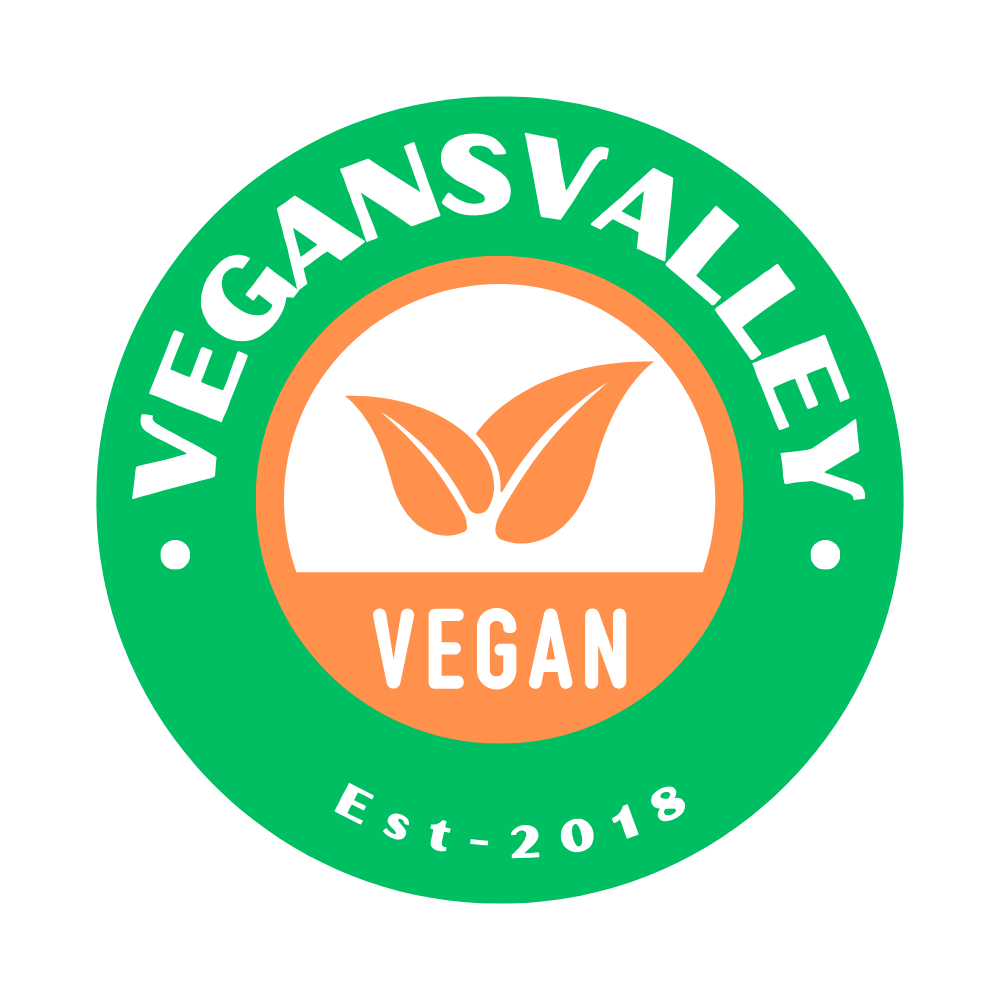Is Silk Vegan: How Is It Made? What Are Its Vegan Alternatives?
Are you wondering if silk fits into your vegan lifestyle? You’re not alone. Many people are surprised to learn that silk comes with significant ethical concerns. If you’re committed to living cruelty-free and making environmentally conscious choices, understanding how silk is made and its impact on animals and the planet is essential.
In this post, we’ll dive into the details of silk production. Also, we will uncover the truth about its effects on silkworms and introduce you to a variety of vegan-friendly alternatives. By the end, you’ll have all the information you need to make informed decisions about your wardrobe and contribute to a more compassionate, sustainable world. Let’s explore the journey of silk and discover better choices together!
What Is Silk?
Silk is a natural fiber that has been cherished for centuries. It is known for its smooth texture and shimmering appearance. This luxurious material is used in everything from clothing and accessories to home decor items like sheets and curtains. But what exactly is silk?
Silk is made from proteins produced by certain insects. The most common source is the mulberry silkworm, Bombyx mori. What makes silk special is its strength and elasticity, which come from the natural proteins in the fiber. Despite its delicate feel, silk is surprisingly durable and has a natural sheen that catches the light beautifully.
Silk is also a breathable fabric, which makes it comfortable to wear in both warm and cool weather. It can absorb moisture, which helps regulate body temperature. These qualities contribute to silk’s reputation as a premium material.
Understanding what silk is and where it comes from is the first step in evaluating whether it aligns with your values. In the following sections, we’ll take a closer look at silk production and why it is not considered vegan.
How Is Silk Made?
Silk production begins with the fascinating life cycle of a silkworm. Let’s break down the stages:
- Egg Stage: The process starts with tiny silkworm eggs, which are about the size of a pinhead.
- Larvae Stage: The eggs hatch into larvae, commonly known as silkworms. These small, caterpillar-like creatures are voracious eaters and feed primarily on mulberry leaves.
- Cocoon Stage: After several weeks of constant eating, the silkworms are ready to spin their cocoons. They produce a liquid silk from their salivary glands, which hardens upon contact with air. Each silkworm spins a cocoon made up of a single, continuous silk thread that can be hundreds of meters long.
- Pupa Stage: Inside the cocoon, the silkworm transforms into a pupa as part of its metamorphosis into a moth.
After the silkworms have spun their cocoons, the next steps in silk production are as follows:
- Harvesting the Cocoons: The cocoons are collected from the silkworm farms.
- Boiling or Steaming: The cocoons are typically boiled or steamed to kill the pupae inside and to make it easier to unwind the silk threads. This is a critical point where the ethical concerns arise, as it involves killing the silkworms.
- Reeling the Silk: The silk fibers are carefully unwound from the cocoons. This process, called reeling, involves finding the end of the silk thread and gently pulling it off the cocoon.
- Spinning the Silk: Once the silk fibers are collected, they are spun together to create threads strong enough for weaving.
- Weaving the Fabric: The silk threads are then woven into fabric using looms. This fabric is what we recognize as silk in various products.
Silk production is a delicate and labor-intensive process. But, it comes with significant ethical concerns, particularly regarding the treatment of silkworms. In the next section, we’ll discuss why silk is not considered vegan and explore more ethical alternatives.

Why Isn’t Silk Vegan?
The primary reason silk is not vegan is that the production process usually involves killing the silkworms. When the cocoons are boiled or steamed to extract the silk fibers, the pupae inside are killed. This is done to prevent the emerging moth from breaking the silk threads, which would shorten the fibers and make them less valuable.
Even if the silkworms are not killed, the process still exploits them for their ability to produce silk. The commercial breeding and farming of silkworms treat these creatures as commodities rather than living beings.
For those committed to a vegan lifestyle, the idea of using animals or insects for any purpose is problematic. Silk production contradicts the vegan principles of avoiding harm and exploitation of all living beings. These concerns make traditional silk unsuitable for those who strive to live a cruelty-free lifestyle.
The Environmental Impact of Silk Production
Silk production is not only ethically concerning but also has significant environmental impacts. First, consider the resources required to cultivate mulberry trees, the primary food source for silkworms. These trees need a lot of water and land to grow, leading to considerable water consumption and potential deforestation.
The process of rearing silkworms also demands intensive labor and energy. Farmers must maintain controlled environments to ensure the silkworms thrive, which often involves artificial heating and lighting. This energy use contributes to the carbon footprint of silk production.
Furthermore, the chemicals used in silk processing can be harmful to the environment. After the silk fibers are harvested, they are often treated with dyes and other chemicals to enhance their appearance and durability. These chemicals can pollute water sources if not properly managed. Thus, they pose risks to local ecosystems and communities.
Finally, the production of silk generates waste. The pupae and the remnants of cocoons not used in silk-making, often end up as waste products. While some of this waste is repurposed as animal feed or fertilizer, much of it contributes to environmental pollution.
These factors combined make traditional silk production an environmentally taxing process. This underscores the need for exploring sustainable alternatives that are kinder to both animals and the planet.
Vegan-Friendly Alternatives to Silk
If you’re looking for luxurious fabrics without the ethical and environmental drawbacks of traditional silk, you’re in luck. There are several cruelty-free alternatives available that offer similar qualities to silk. Let’s explore some of these options:
Tencel (Lyocell)
Tencel is also known as Lyocell. It’s a sustainable fabric made from wood pulp, typically sourced from eucalyptus trees. The production process is eco-friendly, using a closed-loop system that recycles water and solvents. Tencel is soft and breathable. It has a beautiful drape, making it an excellent alternative to silk.
Bamboo Silk
Bamboo silk is made from bamboo fibers. Bamboo grows quickly and requires less water than many other plants. The fibers are processed into a fabric that mimics the softness and sheen of silk. Bamboo silk is also breathable and has natural antibacterial properties. Thus, it is a great choice for sensitive skin.
Peace Silk (Ahimsa Silk)
Peace Silk, or Ahimsa Silk, is produced without harming silkworms. The silkworms are allowed to complete their lifecycle and emerge from their cocoons naturally. The silk fibers are then harvested. This method is more ethical but less common and often more expensive than traditional silk. Peace Silk still offers the luxurious feel of silk without the cruelty.
Cupro
Cupro is a fabric made from cotton linter, a byproduct of cotton processing that would otherwise be waste. The resulting fabric is smooth, silky, and breathable. Cupro is biodegradable and often produced in a closed-loop process. It’s a fantastic alternative to silk with a similar feel and appearance.
Synthetic Silks
Synthetic silks, such as those made from nylon or polyester, can replicate the look and feel of silk. These fabrics are produced from petrochemicals and do not involve animal products. But, they come with their own environmental concerns. Some of them are non-biodegradability and reliance on fossil fuels. Despite this, they remain a popular vegan-friendly option due to their durability and affordability.
Benefits of Vegan Alternatives
Choosing vegan alternatives to silk offers many benefits that go beyond avoiding animal cruelty. Here are some key advantages:
Ethical Production
Vegan alternatives are produced without killing animals. This means you can enjoy luxurious fabrics without contributing to the suffering of silkworms. Ethical production practices also often extend to fair labor conditions. They ensure that the people involved in making these fabrics are treated fairly.
Environmental Sustainability
Many vegan silk alternatives are more environmentally friendly than traditional silk. Materials like Tencel and bamboo silk are made from renewable resources. They involve eco-friendly production processes that minimize water and chemical use. This helps reduce pollution and conserve natural resources.
Versatility and Durability
Vegan silk alternatives are versatile and durable. Fabrics like Tencel and Cupro are known for their strength and longevity. They are suitable for a wide range of applications, from clothing to home textiles. They also maintain their quality through repeated washing and wearing. Therefore, they can last longer than traditional silk items.
Hypoallergenic Properties
Some vegan silk alternatives like bamboo silk have natural hypoallergenic and antibacterial properties. This makes them ideal for people with sensitive skin or allergies. These fabrics are also breathable and moisture-wicking, providing comfort in both warm and cool weather.
Affordable Options
Vegan alternatives to silk can be more affordable than traditional silk, especially synthetic options like nylon and polyester. This makes luxurious, ethical fabrics accessible to a broader range of consumers without sacrificing quality.
Innovation and Style
The growing demand for vegan and sustainable products has driven innovation in fabric technology. This means you can find a variety of stylish, high-quality vegan silk alternatives that cater to different tastes and needs. Whether you prefer the elegance of Peace Silk or the practicality of Tencel, there’s a vegan fabric to suit your style.
Frequently Asked Questions
Can vegans wear silk?
Most vegans choose not to wear silk because its production involves harming and killing silkworms. Since veganism emphasizes avoiding animal exploitation and cruelty, traditional silk is not considered vegan-friendly. Yet, vegans can opt for alternatives like Peace Silk, Tencel, bamboo silk, or synthetic fabrics that do not involve animal harm.
What is the best vegan silk alternative?
The best vegan silk alternative depends on your needs. Tencel (Lyocell) is popular for its softness and eco-friendliness. Bamboo silk offers a silky feel with natural antibacterial properties. Cupro is another great option, being smooth and breathable. Each has its unique benefits, so you can choose based on what suits your preferences and values best.
Can silkworms feel pain?
It’s not entirely clear if silkworms feel pain like humans do. But, they do have a simple nervous system that allows them to react to stimuli. Many people believe it’s better to err on the side of caution and avoid causing potential suffering by choosing cruelty-free silk alternatives or other vegan fabrics.
Will silkworms go extinct?
No, silkworms are unlikely to go extinct. They have been domesticated and bred for silk production for thousands of years. While demand for traditional silk may decrease, silkworms will likely continue to exist in controlled environments. Additionally, wild silkworms still exist in nature, ensuring the species’ survival regardless of changes in the silk industry.
Is silk only made in China?
No, silk is not only made in China, although China is the largest producer. Silk is also produced in other countries, including India, Thailand, Vietnam, and Brazil. Each region has its unique methods and traditions of silk production. This contributes to a variety of silk types and qualities available worldwide.
Are Korean and Turkish silk vegan?
Korean and Turkish silk, like most traditional silks, are generally not vegan. The production process typically involves boiling the cocoons to extract the silk fibers, which kills the silkworms. If you’re looking for vegan options, it’s best to seek out alternatives such as Peace Silk, Tencel, or bamboo silk.
Are all synthetic fabrics environmentally friendly?
No, not all synthetic fabrics are environmentally friendly. Many synthetic fabrics, like polyester and nylon, are made from petrochemicals and are not biodegradable. Their production also involves significant energy use and can release harmful pollutants. Yet, some newer synthetics are being developed to be more eco-friendly. They use recycled materials and greener production methods.
How can I identify vegan-friendly fabrics when shopping?
To identify vegan-friendly fabrics, check the labels for materials like Tencel, bamboo silk, Cupro, and synthetic options like polyester or nylon. Look for certifications or labels that indicate the product is vegan or cruelty-free. Additionally, research brands known for their commitment to ethical and sustainable practices.
Wrapping Up
Silk, a luxurious and cherished fabric, comes at a high ethical and environmental cost. Fortunately, there are many vegan alternatives like Tencel, bamboo silk, Peace Silk, Cupro, and synthetic silks. They offer the same elegance without the cruelty.
By choosing these alternatives, you support practices that protect animals and reduce environmental harm. Vegan fabrics are kinder to silkworms and promote sustainability and innovation in the fashion industry. Your choices can make a positive difference for both animals and the planet. So next time you shop, consider opting for vegan silk alternatives. It’s a simple yet powerful way to contribute to a more compassionate world.

